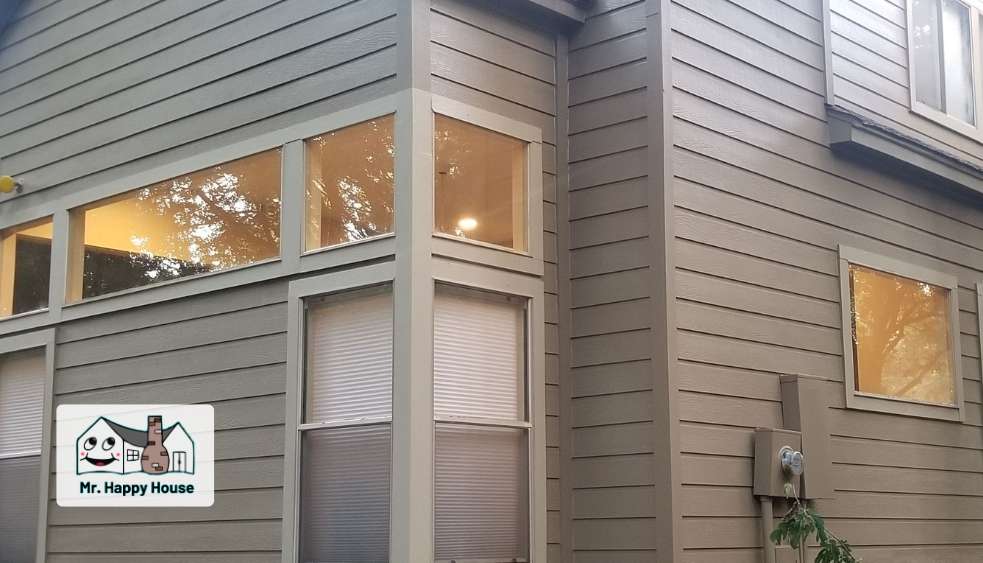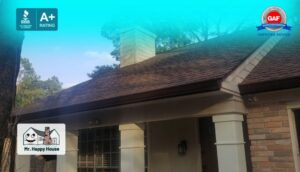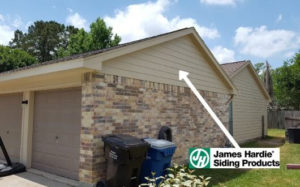
Best GAF Certified Roofers in The Woodlands, TX – Quality Roof Replacement, Gutters & Siding
Best GAF Certified Roofers in The Woodlands, TX – Quality Roof Replacement, Gutters & Siding Best GAF Certified Roofers in The Woodlands, TX – Quality

Choosing the appropriate modern siding for your home’s exterior is crucial, regardless of the style of contemporary home you own. This protects your home from external influences such as harsh weather, pests, and moisture.
As a homeowner, you must give your siding the care it needs since it is essential to shield your property from these environmental elements. Many seek answers on how to maintain your home’s siding. With so much information available, it can be daunting and time-consuming.
Maintaining your home siding can be done in many ways. While siding materials typically last several years. But, depending on their type, regular care must be provided to ensure this longevity continues.
Otherwise, if the deterioration starts, you may need to consider solutions other than regular maintenance. Whether you want to do it yourself or hire a contractor, read on to learn how to care for your siding. You’ll also learn the telltale indicators that your siding requires emergency care.
Each siding material, whether aluminum, brick, fiber cement, vinyl, or wood, has unique features and appearances. The first step in developing a suitable maintenance plan and inspection intervals is understanding the material. Having this knowledge will enable you to make well-informed decisions regarding the exterior of your property.
For instance. PVC-based vinyl siding comes in various colors and textures and is a highly customizable home alternative. In a similar vein, fiber cement, which is composed of cellulose fibers, sand, and cement, feels more robust and solid.
While some siding textures are easily identifiable, others may pose a challenge due to their similar physical qualities. This is where more details about the material’s appearance, texture, and recommended inspection frequency are provided for that particular siding material in the next section. Regular inspections are crucial to maintaining your home’s siding and longevity.
As mentioned, you must adhere to distinct siding schedules and maintenance techniques based on your siding. All siding materials are generally made to require little to no care; however, depending on what your siding was exposed to, this may not always be the case.
See the typical siding explanation below to adhere to the maintenance plan and guidelines to get your answers for how to maintain your home’s siding.
Aluminum siding provides durable and lightweight protection for outdoor use. It is sleek, lightweight, rigid, flexible, cooler to the touch, and produces a metallic sound when tapped. Generally, aluminum siding requires far less upkeep than most other siding options.
Aluminum siding requires regular care and inspection to remain effective and reduce costs over time. Scheduling two inspections each year in spring and fall can help detect new problems before they worsen, providing ample opportunity to address potential issues before they worsen further.
Your siding must be securely attached to your home and periodically examined for wear indicators like chalking, fading, or denting. Maintenance needs to be performed if such indicators appear; use sand-grit paper for this task and spray aluminum siding with metal primer before cleaning with soft bristle brushes or using 400-600 grit sandpaper; for superior results, use a pressure washer with cleaning detergent as part of its solution.
Brick siding’s unique composition and texture give it its characteristic character. Compared to smoother materials like aluminum, its rougher surface stands out. Brick siding must be waterproofed or sealed because it is solid, complex, and porous; its smooth mortar joints allow it to retain cooler temperatures in shaded regions than wood siding. Nevertheless, maintenance is still essential; cleaning regularly, protecting from external factors, and repairs as necessary are part of keeping up with a brick home. Being aware of potential issues can make a difference in maintaining it properly!
Maintain your bricks by inspecting for mortar or brick cracks that could indicate weather damage, settlement, or structural issues. Sealing with siloxane-based sealer can help minimize moisture issues; bricks can usually be cleaned using water and mild detergent solutions. Power washing must never be used because its force could compromise mortar.
Fiber cement siding is composed of cement, sand, and cellulose and, therefore, one of the longest-lasting materials available today. It offers an alternative wood texture while remaining concrete durable; its dense composition recalls wood grain while its smooth or textured surfaces mimic natural wood textures. Furthermore, its matte nonmetallic feel brings natural materials back into view while remaining cool even during warm weather months. However, slight brittleness should be considered as this high-quality material requires minimal attention from you for its maintenance over time. Though more costly than its competitors, fiber cement requires little input from you to keep its looks and performance throughout its lifespan!
Fiber cement siding should be cleaned regularly – at least annually – to prevent stains and damage. Clean out gutters and downspouts regularly to reduce moisture accumulation, damage, mold growth, warping, or rot. While fiber cement is very moisture resistant, be aware of manufacturer recommendations before cleaning if you choose one of James Hardie’s products, as they offer their guide written explicitly for maintenance needs. Do take a look here >> Maintaining James Hardie Siding.
Vinyl siding boasts a smooth plastic surface with a woodgrain texture that gives it a different feel from brick or wood siding. Due to being flexible and lightweight, vinyl resists impact damage and cracking while feeling cold when touched with its hollow sound when tapping it.
Vinyl siding can be easily maintained using water and mild soap, saving utility expenses while requiring less upkeep than fiber cement and wood siding. Mold and mildew growth on vinyl siding is often due to tree branches or debris collecting on it; vinegar solutions or general home cleaners should do the trick if you don’t know which one would work. If in doubt, consult your vinyl siding manufacturer.
Vinyl siding was not meant to be painted outside the house, but you may extend its life by painting with exterior latex paint. Doing this may help extend its life. Consult a professional for help if household cleaning products do not remove significant discoloration or residue – doing so could save money and preserve vinyl siding!
Depending on the type and finish of the wood, wood siding can have a smooth or rough texture and a natural, tactile appeal. It has noticeable grain patterns and inherent flaws and feels warm, solid, earthy, and worn.
Wood siding is an attractive choice for people seeking to add timeless, rustic, or traditional charm to their homes due to its porous surface that wicks moisture away and allows airflow. Because of these qualities, many homeowners select it for its warmth.
Maintaining both structural and cosmetic appeal of siding requires periodic crack inspections and prompt repairs, shielding against moisture variations to protect it from decay and avoid damage or decay, painting whenever paint begins to peel away or every five years, or utilizing clear sealers that preserve its original color from moisture damage, and replacing damaged portions promptly for an attractive unified appearance.
Caulking edges is another preventive technique; bird deterrents or ultrasonic pest repellents could be another method.
No matter the siding you own, regular maintenance is not always feasible. Damage has likely increased, and it’s possible you didn’t complete regular inspections when needed. Sometimes, people put enormous faith in manufacturer warranties regarding maintenance needs for their sidings.
Failing to perform necessary repairs could result in insect or water intrusion and potential wall damages caused by neglecting regular and costly upkeep measures.
At this point, it’s essential to remember that maintenance decisions should be determined based on an assessment of damage. Purchasing new siding can be intimidating, but it is a good option as it can transform the appearance of your home and give it a whole new
One of the most recommended options on the market is James Hardie fiber cement siding. It has already made this journey into homes across America by becoming the most widely chosen brand. With over 5.5 million households nationwide using it – boasting a 30-year non-prorated warranty and offering various styles and features.
Regardless of the kind, the answer for how to maintain your home’s siding lies in cleaning your home’s siding at least once every six months, which will help it remain in top shape for many years.
Although differing siding materials require different maintenance needs and amounts of attention for regular inspections, purchasing from reputable manufacturers typically includes instructions on how to do them correctly. Some manufacturers claim no maintenance is needed for their products, which is not valid. However, options like James Hardie siding allow an extended interval between inspections.
It’s critical to consider both the initial installation and ongoing maintenance expenses. Protecting and caring for your home’s siding as instructed is wise for maximum savings and aesthetic value. By following these tips for cleaning and care of siding, your home could look better and last longer!
We hoped you loved this article about if you can patch rotted wood siding, please share and tune in for more roofing, siding, and house painting content!
Our Services:













Best GAF Certified Roofers in The Woodlands, TX – Quality Roof Replacement, Gutters & Siding
Best GAF Certified Roofers in The Woodlands, TX – Quality Roof Replacement, Gutters & Siding Best GAF Certified Roofers in The Woodlands, TX – Quality

Are Gutters Part of the Roofing System?
Are Gutters Part of the Roofing System? Are Gutters Part of the Roofing System? When it comes to home maintenance, gutters often seem like a

Why James Hardie is The Best Option for Home Siding
Why James Hardie is The Best Option for Home Siding Why James Hardie is The Best Option for Home Siding James Hardie stands out whether











